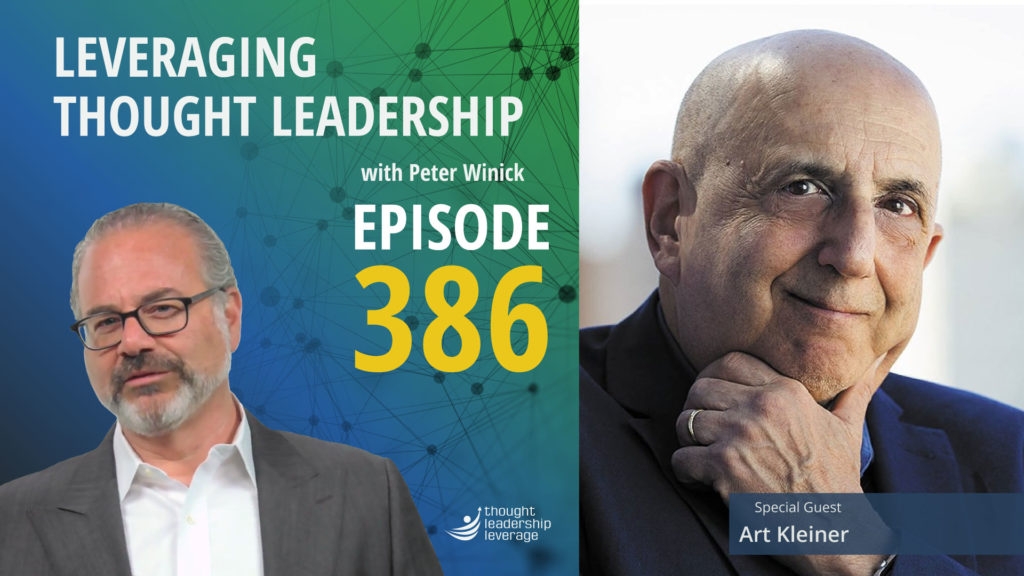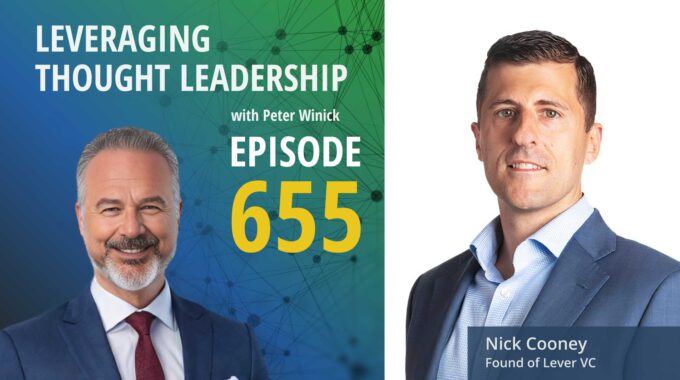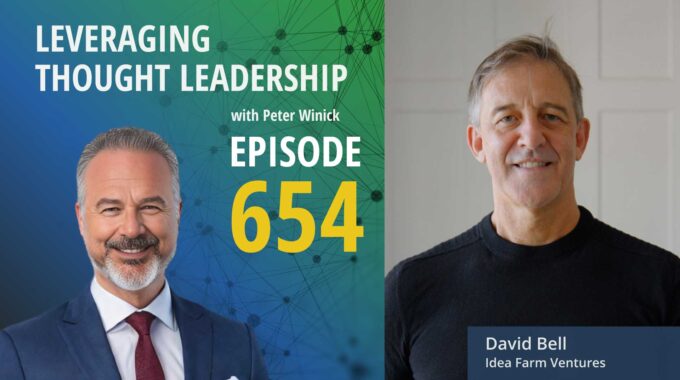Where Human Ingenuity Meets Machine Intelligence AI is transforming thought leadership—but not by replacing humans…
Understanding management thinking | Art Kleiner

Finding solutions and updating the way you think about management.
An interview with Art Kleiner about new methods in management and solving business problems.
Ever thought you’d found the best solution – only to discover in a few years (or a few months!) that the solution was unsustainable?
The truth is that management solutions are complex, and sometimes our answers only complicate the original challenge.
We’ve turned to one of the grandfathers of thought leadership, Art Kleiner, to address this difficult issue. Art is a recognized expert on management thinking, thought leadership, organizational learning, and scenario planning. He’s the Principal Consultant at Kleiner Powell International (KPI), and the author of a number of books including Who Really Matters: The Core Group Theory of Power, Privilege and Success and The Age of Heretics: A History of the Radical Thinkers Who Reinvented Corporate Management.
Art shares stories of a time when business knowledge was universally applied, leading to a range of difficulties with every new application. Leaders wanted “the one right way” to run a business, not realizing that business isn’t a one-size-fits-all scenario. Eventually, thousands of people started offering simpler solutions to complex problems, each expressing the way they’d addressed the challenges. This meant that every problem had hundreds of potential answers, with no way to tell which answer would be the right fit for any individual organization.
Management problems have become more complex than ever, and leaders now face the difficulties of employees who struggle to deal with the global pandemic, radical changes to the workplace, and a much higher standard of responsibility. All of this adds up to the need for thought leaders who can be part of the community and who speak directly to employees with open eyes and empathetic understanding.
We wrap up the conversation by discussing why it is much harder to build an audience today. The technology to reach thousands of people actually causes part of the challenge, creating fragmented audiences scattered across various platforms. In order to build your audience, you have to show up on a regular basis, find a way to connect with them, and share simple ideas that bring about complex changes.
This conversation is filled with great advice for managers and leaders seeking to better understand the complications of their position.
Three Key Takeaways:
- Thought leaders get a lot of return from being an active part of the community they wish to serve.
- Clients are seeking a connection that feels real. They want someone who speaks from experience, and doesn’t just peddle a quick solution.
- Different audiences prefer different media. Some might want to read short blurbs, others listen to a podcast, and a third group might prefer video. Thought leaders must connect with audiences in the manner they prefer.
If you need a strategy to bring your thought leadership to market, Thought Leadership Leverage can assist you! Contact us for more information. In addition, we can help you implement marketing, research, and sales. Let us help you so you can devote yourself to what you do best.
Transcript
Peter Winick And welcome, welcome, welcome, this is Peter Winick, I’m the founder and CEO at Thought Leadership Leverage, and you’re joining us on the podcast today, which is Leveraging Thought Leadership. I’m really excited about today’s episode, so let me tell you about my guest. Art Kleiner is a recognized expert on management, thinking, thought, leadership, organizational learning and scenario planning. He was the editor of Strategy in Business and Peter Senge’s fifth discipline field book. His books include The Age of Heretics and Who Really Matters. He teaches at NYU, and he is a principal of Kleiner Power International and a member of the MG 100. So, one of the grandfathers of thought leadership, I might say.
Peter Winick So, it’s an honor to have you here today. Thank you so much.
Art Kleiner It’s an honor to be referred to that way, and I’m really, really pleased to be here with you.
Peter Winick So in our prep for today, we had two themes because we’re going to do something a little bit differently today than we normally do. It’s not so much about your journey as a thought leader, but it’s sort of your vantage points because you’ve been at the center of the thought leadership world before people were using that word. I think, right? It’s a fairly new word. And I want to I want to start with something that you had. You and I were talking about, which is business wisdom is now specific, not universal. Right. So, it used to be the principles of in search of excellence. Management theory, etc. So, what do you mean by that sort of the specificity of thought leadership today?
Art Kleiner Well, the railroad and the telegraph are only about – they’re less than 200 years old, so it’s only been. And you know, before that, we had joint stock company. So, it’s only been about a few hundred years at most that we’ve really had business the way we know it, the chartered enterprise. It’s supposed to get something done instead of, you know, a – an arm of the crown or the church. And so, from the time of Frederick Taylor, there was a real search for the one best answer. You know, the one best way, even Taylor called it that. And he went out with a stopwatch and clock the way, right? Did you know, used pickaxes and carried steel? And there was a real temptation to say. If we all follow the one best way, we’ll have a highly effective, efficient company. And that turned out to be really problematic, especially for the people carrying the steel ray, who were now monitored and tracked and not allowed to bring any of their thinking to the job, but also
Peter Winick But they branded it well, right? They called it scientific management. How could you argue with that? He had a stopwatch and graphs, and the best way to lift the coal is, you know, bend your knees. 12, whatever it was. So, from a branding standpoint, it sounded good right there,
Art Kleiner And it still sounds good with artificial intelligence and monitoring activity. Except it’s now not just the employees, it’s also the consumers and citizens in some places. So it’s still got a life, you know, this quest for the one best way. And when it didn’t work, when companies started discovering that they couldn’t keep that going and still succeed, we switch to another one best way with organizational learning, you know? Douglas McGregor theory why the you but it underneath the new prescriptions was still the idea that somewhere out there was one prescription that would apply to every kind of entrepreneur, every kind of business. And then ultimately, you know, by the time we get to the 90s. The number of the know it’s not just Tom Peters writing in search of excellence, you now have choices of people offering advice. And the fascinating thing, Peter. Is they’re all offering simple solutions, simpler solutions to the complex problem of management. But every solution is making that problem more complex.
Peter Winick Because it’s more about that, so the solutions are adding to the complexity of manage, you know, business is getting more complex. The solution seems simple, but in essence are compounding the complexity issue. Is that what
Art Kleiner Exactly. so, you know, future shock is happening. There’s more and more uncertainty. And every time people have looked for a place to turn for the answer about how to be inclusive, how that, you know, manage people effectively, how to motivate people, how to bring people in. Now, instead of having three or four answers, they have two or three hundred. Some of which have a big history at their company already, if it’s a big company, some of which are new and upstart, some of which they’ve heard this new company called Google, you know, just because people working on 10 percent of what they choose, what’s the right thing to do? Every new answer makes the problem more complicated.
Peter Winick So. So let me push on that a little bit because I think that. I think that’s largely true with an asterisk, and the asterisk is some people try to, you know, it’s flavor of the month like, I think a lot of leaders. Worst nightmare is the CBO comes in with a book under his arm on a Monday morning. Oh my god, we got to do this thing. Whatever it is, let’s be agile. Let’s be creative, let’s be innovative. And everybody’s sort of like this, too. This, too shall pass, right? And I think when you try to go all in on one thing, that’s a mess. I always look at a little bit differently and say, you sort of every book that you read, every article, every piece of thought leadership that you take in is just another data point. Something else to integrate. What’s the right chemical mix for you at your company at this time, based on where you are and what you’re trying to achieve?
Art Kleiner Well, that’s exactly where people are, and that’s what people do when they have a complex system, they say, let me bring my own ability as a leader up so that I can manage the complexity that I see around me and I can’t do, you know, so maybe I can do that with my team. Now we’re not talking about, you know, abstract issues. We’re talking about people with really real problems, for instance. I’m let’s say I run a large company. I’ve got people who are in trauma. Sure, lost family members. They haven’t been able to leave their house or when they do leave their house, they’re not sure how safe they are. I’ve got supply chains that I have to decide are they breaking down or not breaking down?
Peter Winick Yeah.
Art Kleiner They’ve got to raise capital and they’ve got to decide, you know, should I use bitcoin or should I not, you know, I’ve got artificial intelligence, you know, emerging. I can’t ignore it. My competitors are using it. And at the same time, do I really want to be responsible if something goes problematic? And I’ve got this thing called ESG. Which is really an acknowledgment of the fact that I am now going to be held accountable for unintended consequences.
Peter Winick Right. And then throw in great and then throw in the great resignation and then throw when we come back to work, do we not come back to work? Let’s throw in that. How does remote work affect our culture? And good luck, Mr. or Miss CEO.
Art Kleiner So you’re telling me that I’m going to build in myself the capacity to handle all this? I can, but I want a thought leader. I’m not going to do it by following, you know, a hundred different books. I’m going to do it by following the writers who can speak to me. In a voice that I can hear, we’re the same community, but who can also open my eyes and who I trust is authentic. So, on this last point. So, for instance, a KPI player, Powell International, which is our thought leadership firm. We’re looking a lot at what the genuine connection is because we know that, you know, working with ideas, working, you know, we’re building meaning and you build meaning by making connections, so you’re always right. As part of a community. So, we started looking at what in our community is our clients community, our community, like a lot of your listeners here. Sure, our businesspeople, the people who are trying to make something happen, make a living, but also make a contribution. And they know that those two things are [sic]. So, we started looking at what business audiences really want, and we used the as a proxy the comments that people make to business books on Amazon.
Peter Winick Because that’s sort of your glass door, if you will, right? So what are people saying about doing, OK, got it.
Art Kleiner Very cool. And we weren’t looking at, you know, this business book is bad or this business book is good. We looked for comments that would reveal what people were looking for and what they valued. OK, so someone would say, you know, I really like this, this book on innovation, what I liked about it was X; turns out the thing they liked most – the X that came up the most – is “this person has been there.”
Peter Winick So stay there a minute, because I only see I always feel like Switzerland right in that in the universe of thought leaders, there’s a couple of distinct camps. There is the academics, wicked smart coming from the greatest universities and everything they’ve done is validated by the 11th decimal point. Then there’s the business folks and say, Well, that’s all fine and dandy, but they live in a world where you get to control the variables, and I don’t and they wouldn’t know a real customer if it fell from the sky. Then you’ve got the third constituent group or the consultants that don’t really fit into either camp that are in the profession of solving problems, you know, said the consultant. Right? And sometimes they’re really good. Sometimes not the academics go, Yeah, but it’s not academically valid. And then the, you know, the business folks go, Yeah, but do they borrow my watch and tell me what time it is? So how do you jive all that together?
Art Kleiner None of those three are the category I’m talking about. There are examples in all three of those. What I meant, so I said, I’ve been there, you know, they’ve been there. What they really mean is this is a person who’s it’s this is a no B.S. point of view. This is somebody who is speaking from not just experience, not just evidence and not just client awareness. But this is somebody who is not trying to game me or play me or convince me or something. This is somebody who has been there in the sense of understanding. So for instance, right now we’re working with a group at MIT and the Broad Institute, the Broad Institute for mapping the genome in the movie at the Sloan School. And they have boiled down operational wisdom to four basic principles, so you could say, OK, this is another case of the four principles of X, or the seven ways of -.
Peter Winick Yeah, right.
Art Kleiner Whatever. But they’ve actually gone and tested those with real companies and said, Let’s see what happens when we apply these.
Peter Winick So this is a hybrid of the academic actually going out into the field and it raises the hybrid
Art Kleiner and then it takes time to do that. It takes a lot of it, but it. But then the people who read this. We’ll know. You know, this is something it’s not just I can trust it. It’s not just it has face validity. But here’s somebody who knows how to. Bring out the evidence base there, the substance. And make a connection with me on that. And those two things go together.
Peter Winick Love it. Love it.
Peter Winick If you’re enjoying this episode of Leveraging Thought Leadership, please make sure to subscribe. If you’d like to help spread the word about our podcast, please leave us a review and share it with your friends. We’re available on Apple Podcasts and on all major listening apps, as well as at ThoughtLeadershipLeverage.com forward slash podcasts.
Peter Winick I want to move to the sort of different thread here, a different track that you and I were talking about. And I think this is really something that a lot of thought leaders, aspiring thought leaders, et cetera, struggle with and don’t understand, which is how hard it is to build an audience. One would think intuitively, well, it should be easier because there’s always there’s LinkedIn, there’s Instagram, you know, whatever. There’s so many different places versus twenty five years ago. Folks, like you. Yes, it was controlled then. Why is it so much harder today to build an audience? And I would say the right one? Right.
Art Kleiner So partly it has to do with what you have to say, and partly it has to do with how large and fragmented the audiences and the thought leaders are. And a lot of times people don’t recognize people compare themselves to, you know, the pundit, the visible pundit.
Peter Winick Yeah.
Art Kleiner And they don’t compare. They do better to compare themselves to who they were a year ago. So, for instance, one of the first people I worked with was Peter Sungai, and I still work with Peter. And when he did the fifth discipline, it felt like an overnight sensation. He had been working with those ideas in a adult education context with partners and collaborators for 12 years, honing them, refining them, kind of bringing them to life and making sense of them.
Peter Winick But that’s the practice of the violin before Yo-Yo Ma gets on stage, right? That’s the that’s the part nobody see.
Art Kleiner And then there’s another part which is, then we went further, and we did the fieldwork, and we did, you know? Right? Anyone who is basically putting out a book is also putting out a campaign around it, a portfolio of pieces. So, for instance, again, when we advise people on leadership strategy and I’m sure we’re not alone in this, we advise people around the portfolio. There’s you’re quite right and you want to make sure the logic of the core ideas is really good and based on, you know, sort of substance and in the Antarctic. But you also you have to show up, maybe not every day, maybe every week. But you have to show up with something and you also have to. Make the most of the audience you have and the audience that they’re going to help you develop and you need to you, you know, there are people who will read. Five hundred there are people who will read, you know, a thousand words or 5000 words even. And there are a lot of people who will read 300 words. And so you have to find ways to connect.
Peter Winick Well, then there are people who don’t read any words and want to see what you have to say in video or this, exactly podcasts like this or something. I want to expand on a piece that you said there is that. Your audience, I think part of the issue or the struggle that people have is they’re so passionate about what they do, right? And to some degree, that could make them a bit myopic, and they see the power in their ideas. They know that when it’s unleashed, it changes lives or companies or teams or whatever for the better. So they want to be evangelical around the idea. Except the reality is you have to be really narrow, not really broad, right? Nobody’s got the budgets of Coca-Cola. So you’ve got to say, Well, who am I serving? Who will this idea resonate with the most given the limited amount of time and energy and resources I have as a thought leader to get it out there and build my audience?
Art Kleiner Yeah, I love. I love the way you put it. There’s sort of like the engineer who’s releasing a new, you know, a new type of. Monitor or something and give you a remote with like 50 different buttons on it, because each one of those has a value and they love the value of it.
Peter Winick Except no normal human could figure out how to use it.
Art Kleiner So you want an idea that’s simple without being simplistic and then on the other side. So you said broader narrow audience and. I want to put an asterisk there myself, I think. Sure. I think we aspire to the right audience, and we aspire to an audience that connects. And a lot of it is figuring out who we connect to. So, for instance, you know, we work with IFC, which is part of the World Bank, on studies of companies, you know, mostly health care, providing some education companies. You could say our audience is people in emerging economies. You could say early people who like case studies, you could say our audience is is investors because a lot of what the IFC does is Marshall investment. Yes, you have impact in the emerging world, in emerging economies. But the audience really is people who are looking for ways to solve the particular type of problem that these companies solve, which is how to be innovative. Either when you’re in a startup or when you’re in a startup economy situation, and I just want leaders to connect with those people and find a way to define and reach them.
Peter Winick One, I would almost debate the term audience, I think there’s two types, there is users, there’s a lot of people that would read what you have to say and you know, right, right. A lovely comment. They appreciated the thoughtfulness, et cetera, et cetera, et cetera. But they can’t really do much selfishly right their users, right? Right. And then there are buyers who are the subset of the people that would read what you’re putting out into the universe and go, Wow, I want to hire KPI. That was such a great job that they did, because quite frankly, that’s the journey of the thought leader. Like, you need to tantalize an audience, if you will, with your thinking and your thoughts and your writing, etc. But it’s only a very, very, very small subset of the readership, if you will, that your buyer, where you have to put your thumb on the scale and say, I need to spend more energy connecting with them because they pay the bill.
Art Kleiner Yeah, but it happens in a non-linear way.
Peter Winick So, yeah, just say more about that.
Art Kleiner John Wanamaker famously said, you know, half my money on advertising is wasted, but I don’t know which half.
Peter Winick Exactly.
Art Kleiner When it comes to content. Probably 50 or more percent, 70 percent of the effort I make is not going to bear fruit today. But it will bear fruit.
Peter Winick No, and that’s fine. That’s OK. But I want to even push on that, some of that when you say it will not bear fruit today, I would push even further. Some of it may never bear fruit. And that’s OK. Some of it may bear fruit later, you’re planting the seeds in an emerging leadership class that might embrace their ideas down the road or students or whatever.
Art Kleiner It’ll be a different kind of fruit. Or it’ll. I mean, there’s only so far we can take this metaphor.
Peter Winick Yeah. Yeah, yeah. But the singularity?
Art Kleiner But it will. So OK, there is an intrinsic value to having the right idea out in the world at the right time. Absolutely. Absolutely. There is a real value to having the ability to craft an idea recognized, and there is a huge value in being part of a larger community that is working with management and ideas. And here’s where I think the thought leadership community has an opportunity to really improve. I mean, we have groups like the Thinkers 50 and
Peter Winick MG when you – 1000 – yeah
Art Kleiner Where we’re building bridges among people, but we don’t. Yet, but we’re emerging towards a sort of common understanding and shared language. We’re going through a little bit what psychology went through.
Peter Winick Yeah, I think that’s right.
Art Kleiner You know, James Hillman and Michael Ventura wrote this great book about a while ago called We’ve Had 100 Years of Psychotherapy and the World is Getting Worse. You know, we’ve had 35 years of business thought leadership and things are getting more complex. But we have opportunities to make sense with each other as much. We’re competitors, but we’re also looking for the same thing which is going back to that audience we talked about right at the beginning. That person who’s going to make decisions, you make things happen and he doesn’t just need to make a decision, right? They’re not looking for. Give me the wisdom to solve this problem. Sure, in fact, our in our research, one of the other things that came up the most, the strongest was I want something that will change the way I think. And what they’re really looking for is how can I be the kind of leader I need to be?
Peter Winick Exactly, exactly. I want to go back to something you said a little while ago in terms of where psychology was 35 years ago or 100 years ago. We’re all still crazy, right? I think even groups like Thinkers 50, which is amazing and the MG 100, 1000, which is amazing. They’re a really new phenomenon. Right. And what they’ve done is given thought leaders a place to come together as a community because thought leadership is a lonely profession, right? Almost any other profession you have, you can go to your kid’s soccer game on a Saturday morning, say, Oh, I’m an accountant, you’re an accountant. What do you think of the new tax laws? There isn’t. You know, you’re probably the only one of your friends. And all that is, what do you do for a living like, oh, you know, or whatever, you know? But now that they’re all starting to come together in different pockets, I think that is the precursor to sort of the power of community. So, either helping one another but also aligning round objectives, doing good work, while everyone also has to meet their own personal and professional and financial objectives. So, I think it’s we’re early in the time on this thought leadership thing is fairly new. Plus or minus, depending on how you define it. This has been fabulous art. It’s been an honor and a privilege to talk to you. I feel like you’ve been talking in my head for twenty-five years in terms of reading that you wrote the place to hear the voices behind it. So, I appreciate you spending time with us today.
Art Kleiner No, not at all. Thank you. It’s I feel the same way. This is a real, real treat to talk about some of these issues. Can I mention the website that –
Peter Winick Yeah, you can plug away if nothing, if thought leaders learn nothing else. Never waste an opportunity for a good plug.
Art Kleiner And that is a technique that goes back to the Roman Empire. We’re not new.
Peter Winick So before we bring on the gladiators, right, we need everybody to kick out at
Art Kleiner KleinerPowell.com is our URL. My partner is Juliet Powell, so that’s how you reach us. KleinerPowell.com. And this is a lot of fun. I really like talking about this. So cool.
Peter Winick Thank you so much. To learn more about Thought Leadership Leverage, please visit our web site at ThoughtLeadershipLeverage.com to reach me directly. Feel free to email me at Peter at ThoughtLeadershipLeverage.com and please subscribe to Leveraging Thought Leadership on iTunes or your favorite podcast app to get your weekly episode automatically.






